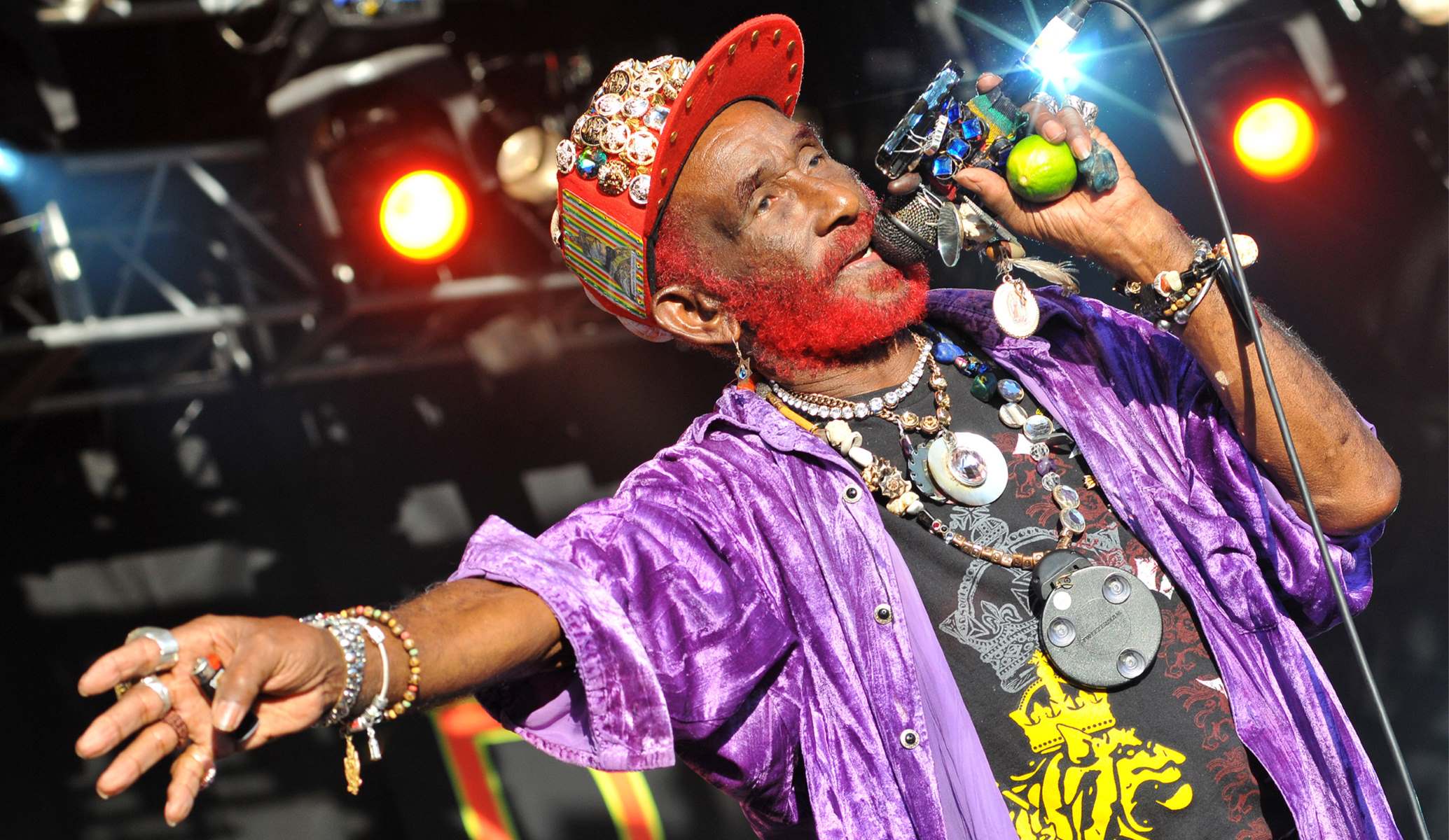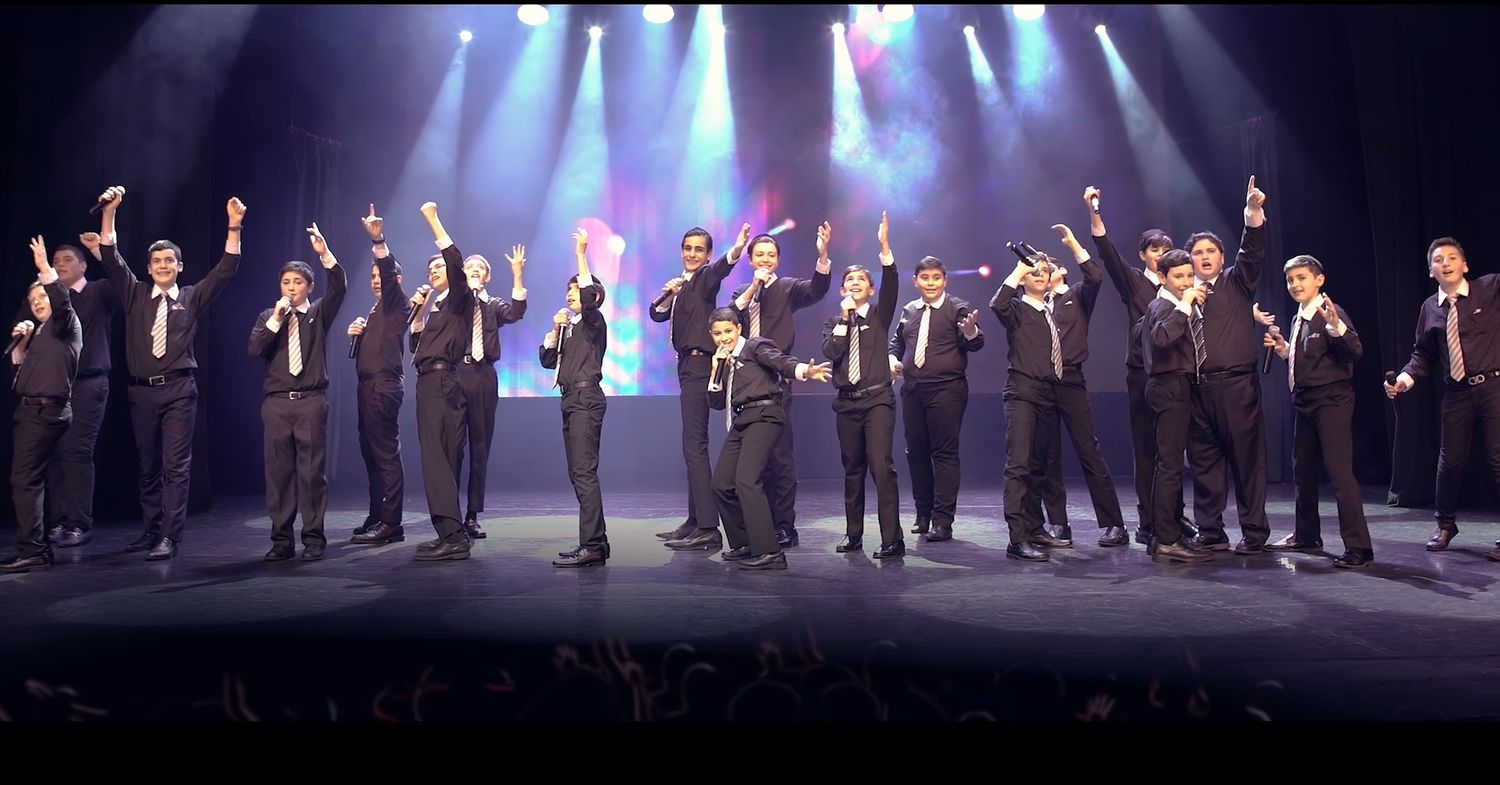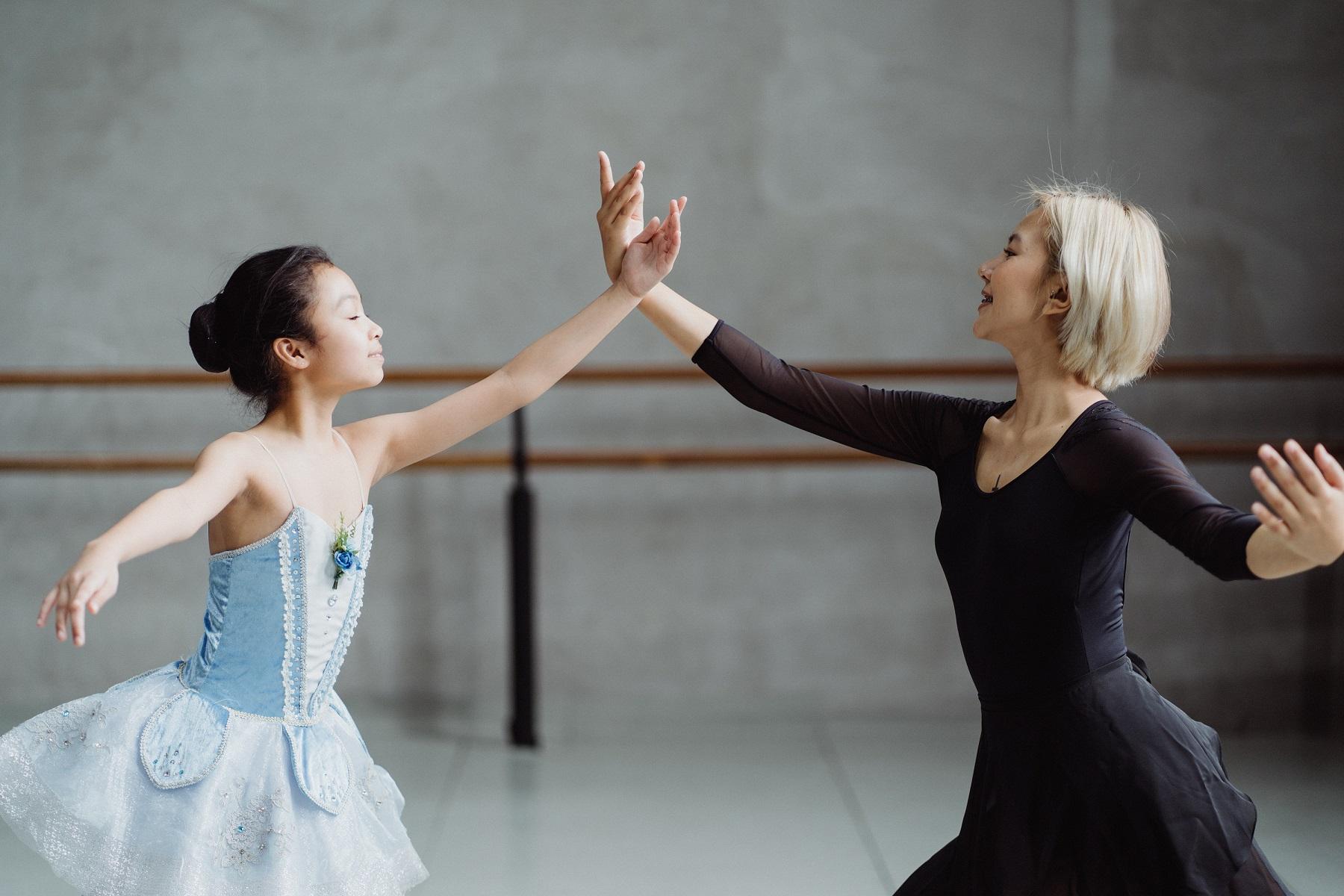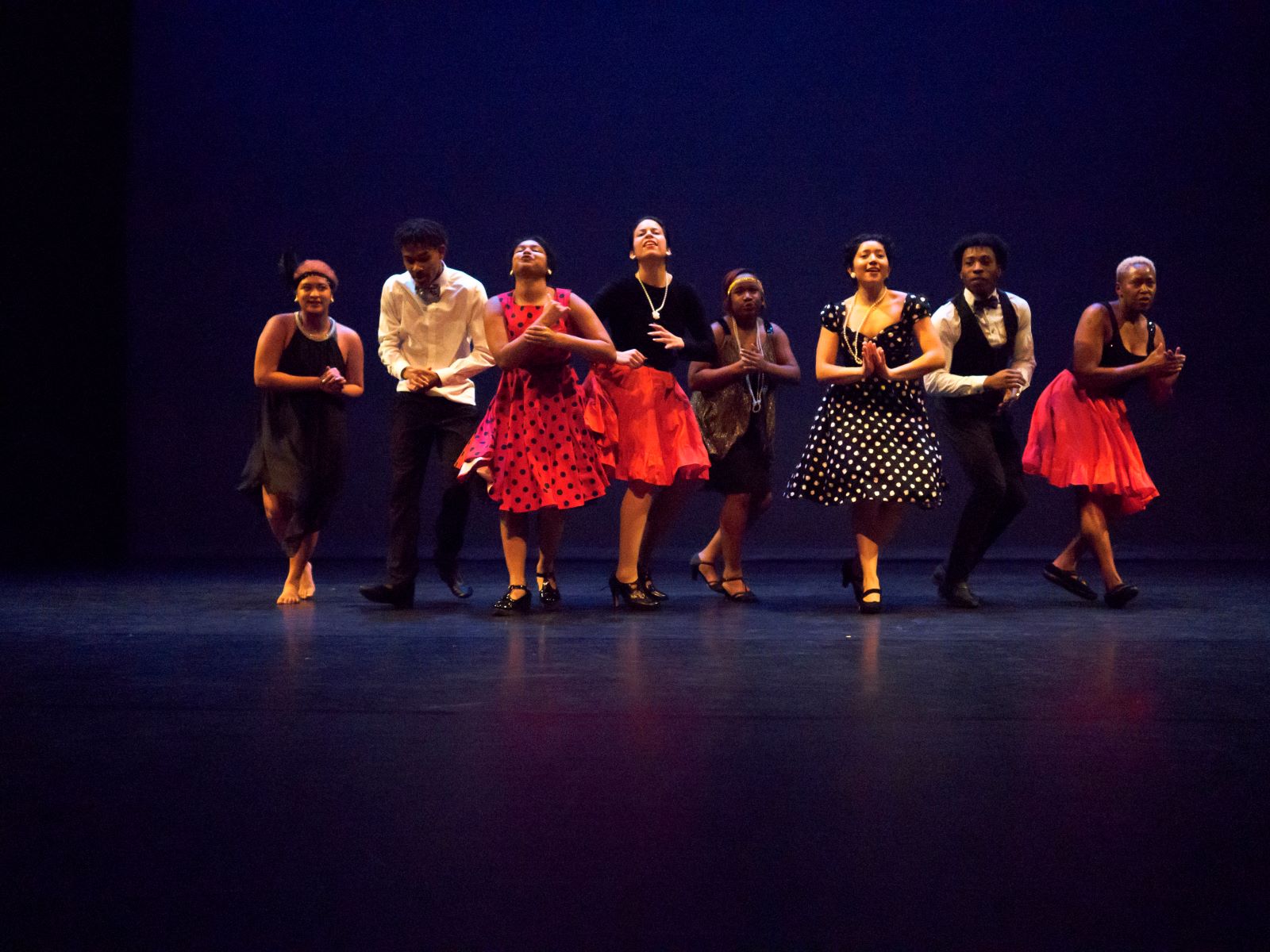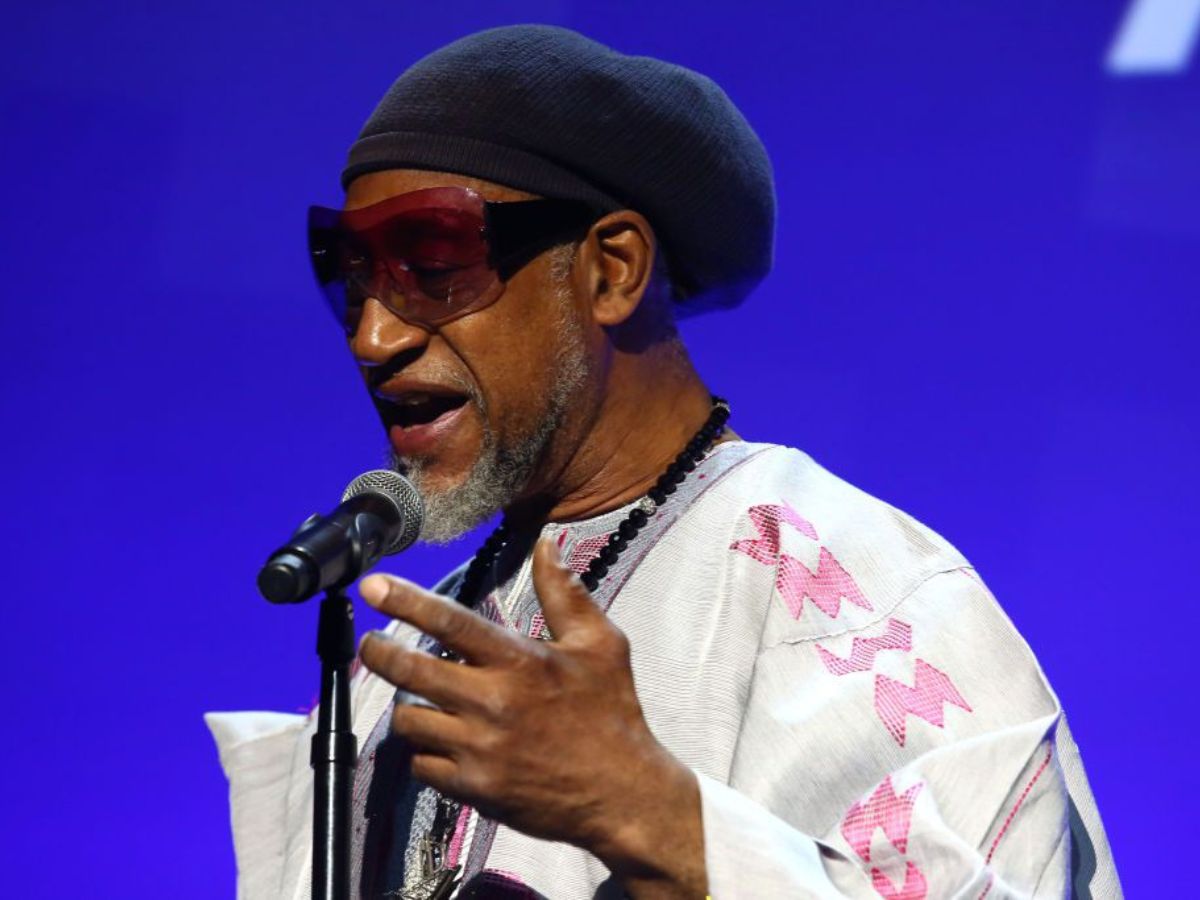Home>Events & Info>Ballet>Who Invented Ballet Dance
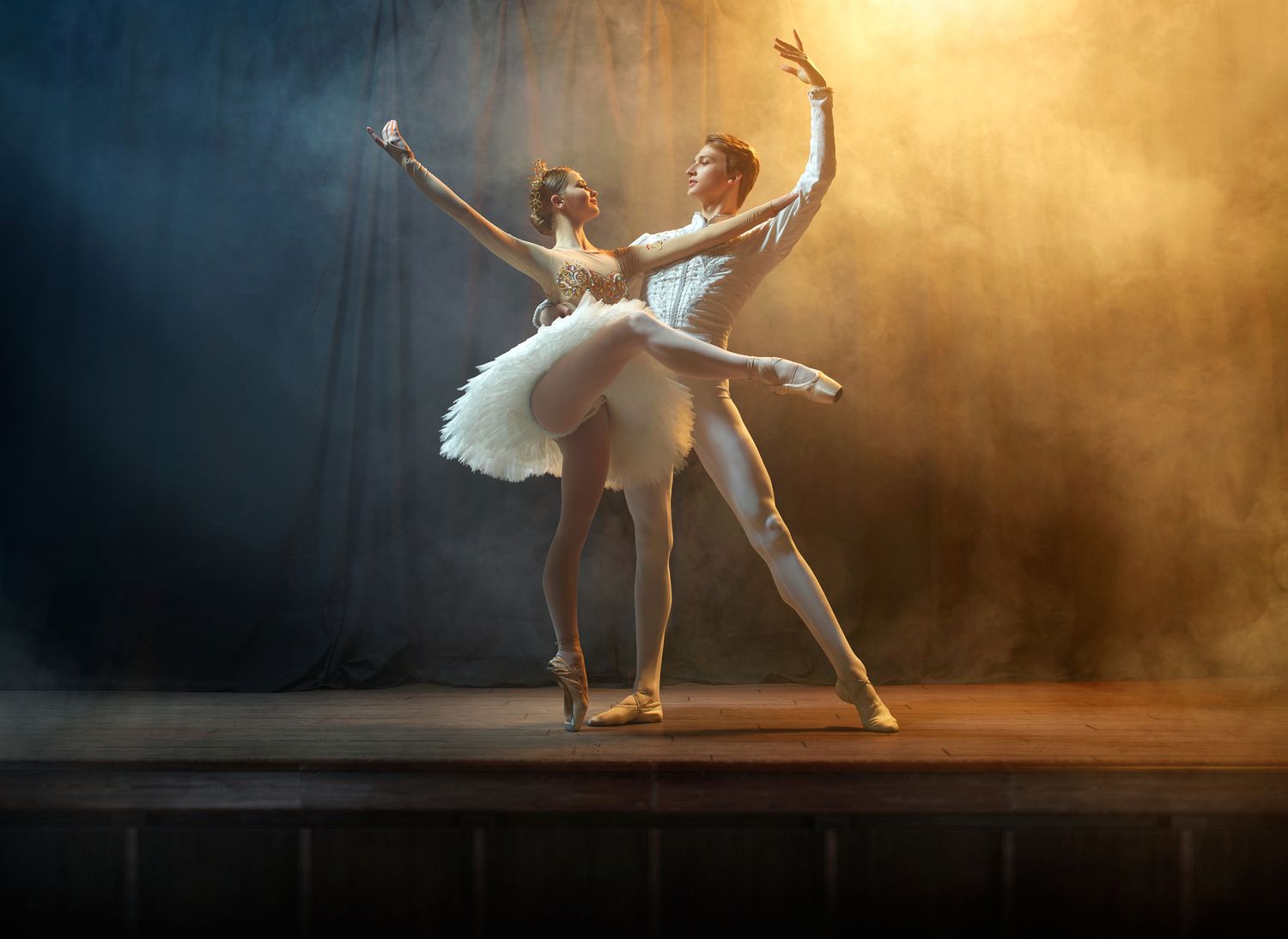

Ballet
Who Invented Ballet Dance
Published: January 10, 2024
Learn about the origins and history of ballet dance, from its invention to modern interpretations. Explore the captivating world of ballet and the influential figures who shaped this graceful art form.
(Many of the links in this article redirect to a specific reviewed product. Your purchase of these products through affiliate links helps to generate commission for AudioLover.com, at no extra cost. Learn more)
Table of Contents
- Introduction
- The Early Origins of Ballet
- The Influence of Italian Renaissance Courts
- The French Influence on Ballet
- The Evolution of Ballet Technique
- The Role of Marie Taglioni and Romantic Ballet
- The Birth of Classical Ballet
- Innovations of the Ballet Russes
- The Impact of George Balanchine and American Ballet
- Conclusion
Introduction
Ballet is a mesmerizing and graceful art form that has captivated audiences for centuries. Its origins can be traced back to the Italian Renaissance courts in the 15th century, where aristocrats would engage in elaborate dance performances as a form of entertainment. Over time, ballet evolved into a discipline that requires immense skill, technique, and dedication.
The history of ballet is rich and diverse, with influences from various cultures and time periods. From its early origins to the revolutionary innovations of the Ballet Russes, ballet has continuously evolved and pushed the boundaries of artistic expression.
In this article, we will delve into the fascinating history of ballet, exploring its early origins, the influence of Italian Renaissance courts, the French influence, the evolution of technique, key figures like Marie Taglioni and George Balanchine, and the impact of American ballet. By understanding the historical and artistic journey of ballet, we can gain a deeper appreciation for this exquisite art form.
The Early Origins of Ballet
The roots of ballet can be traced back to the 15th century, where it emerged as a form of entertainment in the Italian Renaissance courts. At this time, dance was an integral part of courtly life, and aristocrats would participate in elaborate performances that combined movement, music, and storytelling.
One of the earliest known ballets is “Le Ballet Comique de la Reine” (The Comic Ballet of the Queen), performed in 1581 in the court of Catherine de’ Medici in France. This influential ballet marked a significant shift, not only in terms of its theatricality but also in the inclusion of female dancers. Prior to this, dance was predominantly performed by men.
During the Renaissance, ballet began to develop its own distinct vocabulary of movement and technique. Steps and positions were codified, and ballet masters emerged to teach and choreograph the growing repertoire of dances. However, it was still very much rooted in courtly entertainment and had not yet evolved into a professional art form.
It was not until the 17th century that ballet gained wider popularity and started to emerge as a theatrical spectacle. In 1661, King Louis XIV of France established the Académie Royale de Danse, which later became the Paris Opera Ballet. This institution helped to formalize ballet training and standards, laying the foundation for the professionalization of ballet.
Throughout this period, ballet continued to evolve in terms of technique and style. It drew inspiration from various sources including Italian court dances, French courtly ballets, and even elements of folk dances. As ballet became more refined, dancers began to wear specialized costumes, including pointe shoes for female dancers to perform en pointe.
The early origins of ballet provided a strong framework upon which the art form would continue to develop and flourish. It set the stage for the groundbreaking innovations and transformations that would occur in the centuries to come.
The Influence of Italian Renaissance Courts
The Italian Renaissance courts played a crucial role in the development and popularization of ballet. During this period, dance became an integral part of courtly life, with aristocrats and nobles showcasing their grace and elegance through elaborate dance performances.
Italian Renaissance dance was characterized by its fluid and graceful movements, drawing inspiration from the art of courtly love and the ideals of beauty and refinement. The dances were often accompanied by music, creating a harmonious blend of movement and melody.
One of the most influential figures in Italian Renaissance dance was Catherine de’ Medici, who later became the Queen of France. Catherine was a patron and avid supporter of the arts, and she brought her love for dance to the French court when she married King Henry II of France. Under her influence, ballet began to take on a more theatrical and structured form.
One notable ballet performance that showcased the influence of Italian Renaissance courts was “Ballet de la Merlaison” (Ballet of the Blackbird). This ballet, performed in 1581, combined elements of courtly dance with mythological themes and elaborate costumes. It was a spectacle that astounded audiences and laid the groundwork for the future evolution of ballet as a theatrical art form.
The Italian Renaissance courts also played a significant role in shaping the role of women in ballet. Prior to this period, dance was primarily performed by men, but the Italian courts embraced the inclusion of female dancers. This marked a departure from tradition and allowed women to showcase their talent and artistry in ballet performances.
Furthermore, the Italian court ballets introduced the concept of dance as a narrative form. Dance became a means of storytelling, with performers using movement and gestures to convey emotions and portray characters. This emphasis on storytelling laid the foundation for the ballets of later centuries, where narrative and dramatic elements became integral parts of the art form.
Overall, the influence of the Italian Renaissance courts on ballet cannot be overstated. By promoting dance as a form of entertainment and artistic expression, the courts fostered an environment where ballet could flourish and evolve. The foundations laid during this period continue to shape ballet as we know it today.
The French Influence on Ballet
The French influence on ballet cannot be overstated. France played a pivotal role in the development and refinement of ballet, shaping its techniques, aesthetics, and cultural significance. From the establishment of the Académie Royale de Danse to the creation of iconic ballets, the French have left an indelible mark on the art form.
In 1661, King Louis XIV of France established the Académie Royale de Danse, which later became the Paris Opera Ballet. This institution was a key driver in the professionalization of ballet, setting standards for training and performance. Under the guidance of ballet masters such as Pierre Beauchamp, ballet technique began to be codified and formalized.
One of the most significant contributions of the French to ballet was the refinement of technique and the development of the five positions of the feet. Pierre Beauchamp, the principal ballet master of the Académie Royale de Danse, codified these positions, providing a foundation for the precision and elegance that became synonymous with ballet.
The French influence also extended to the aesthetics and style of ballet. During the 18th century, ballets such as “La Sylphide” and “Giselle” introduced the concept of the ballerina as the central figure, embodying grace, poise, and ethereal beauty. The French emphasis on elegance and refinement set a standard for ballet aesthetics that continues to influence the art form to this day.
Another notable French contribution to ballet was the development of the proscenium stage, a configuration where the audience views the performance from a single direction. This stage design allowed for more elaborate set pieces and spectacle, enhancing the theatricality of ballet productions.
The French also played a crucial role in expanding the repertoire of ballet. Choreographers such as Jean-Georges Noverre and Marius Petipa pioneered narrative ballets, infusing storytelling, drama, and character development into their works. These ballets, such as “Giselle,” “Swan Lake,” and “The Sleeping Beauty,” became enduring classics and continue to be performed by companies worldwide.
French influence in ballet reached its pinnacle during the 19th century with the rise of the Romantic Ballet. This era introduced new theatrical elements, such as supernatural themes and ethereal female characters, revolutionizing the art form. The Romantic Ballets, including “La Sylphide” and “Giselle,” showcased the technical skills of the dancers while evoking deep emotions through their storytelling.
Today, the French influence on ballet remains prominent. The Paris Opera Ballet, established in the 17th century, continues to be a powerhouse in the ballet world, preserving and showcasing the French style and repertoire. The elegance, precision, and artistic flair that define French ballet continue to inspire dancers and audiences around the globe.
The Evolution of Ballet Technique
Over the centuries, ballet technique has undergone a remarkable evolution, transforming from its early origins in the Italian Renaissance courts to the technically demanding and highly stylized form of dance we see today. This evolution can be traced through the development of technique, the refinement of movements, and the influence of key figures in ballet history.
In its early stages, ballet technique was rooted in the graceful and flowing movements of courtly dance. However, as dance became more formalized and professionalized, new techniques and principles were introduced to enhance dancers’ abilities and artistic expression.
During the 17th century, ballet technique began to be codified and standardized. This was largely due to the influence of ballet masters such as Pierre Beauchamp, who established the five positions of the feet and introduced principles of turnout, alignment, and placement.
Turnout, the rotation of the legs outward from the hips, became a fundamental aspect of ballet technique. It not only adds aesthetic appeal but also allows for greater range of motion and stability in various movements. Proper alignment, with the body held upright and the core engaged, became essential for executing movements with control and precision.
As the technique developed, so did the vocabulary of steps, known as the ballet lexicon. New movements and combinations were created and integrated into choreography, expanding the range of expression and technical challenges for dancers. Steps such as pirouettes, grand jetés, and arabesques became iconic elements of ballet performance.
The 19th century witnessed further advancements in ballet technique with the advent of pointe work. Marie Taglioni, a renowned ballerina of the Romantic era, popularized dancing on the tips of the toes, using specially crafted pointe shoes. Pointe work added a new level of difficulty and elegance to ballet, allowing dancers to defy gravity and create the illusion of floating.
The 20th century brought further innovation and evolution to ballet technique. Visionary choreographers such as George Balanchine challenged traditional conventions and pushed the boundaries of movement. Balanchine’s neoclassical style emphasized speed, athleticism, and musicality, revolutionizing ballet technique and inspiring generations of dancers.
Today, ballet technique continues to evolve and adapt as new choreographers and dancers bring their own artistic visions to the art form. The incorporation of elements from other dance styles and the fusion of traditional and contemporary influences have further expanded the range of movement and artistic expression in ballet.
Through the evolution of ballet technique, dancers have mastered movements with precision, strength, and artistry. Each era and each dancer has built upon the foundations laid by their predecessors, contributing to the extraordinary art form that ballet is today.
The Role of Marie Taglioni and Romantic Ballet
Marie Taglioni, a renowned ballerina of the Romantic era, played a pivotal role in the development and popularization of ballet during the 19th century. Her ethereal grace, technical prowess, and captivating performances solidified her status as one of the most influential figures in ballet history.
Taglioni’s most notable contribution to ballet was her pioneering work in pointe work. She was one of the first ballerinas to dance on the tips of her toes, using specially crafted pointe shoes. This innovation brought a new level of elegance and ethereal quality to ballet, as dancers appeared to float across the stage.
One of Taglioni’s most iconic roles was in the ballet “La Sylphide.” Premiered in 1832, “La Sylphide” is considered a cornerstone of the Romantic Ballet movement. Taglioni portrayed the elusive Sylphide, a supernatural creature, with a haunting beauty and delicate charm. Her portrayal captivated audiences and helped establish ballet as a narrative art form with a strong focus on emotions and storytelling.
Taglioni’s technical virtuosity and expressive style set the standard for ballerinas in the Romantic era. Her performances showcased intricate footwork, dazzling leaps, and a lightness likened to that of a feather. Her portrayal of delicate and otherworldly characters resonated with audiences, shaping their expectations of ballet and inspiring future generations of dancers.
Taglioni’s impact on ballet extended beyond her performances. Her influence could be seen in the evolution of ballet costumes, as she favored ankle-length white tutus to enhance the illusion of weightlessness. This departure from the heavier, more restrictive costumes of previous eras allowed for greater freedom of movement and added to the ethereal quality of the Romantic Ballet aesthetic.
Furthermore, Taglioni’s success paved the way for other ballerinas to attain prominence and recognition. As more female dancers took center stage, the ballerina became the focal point of ballet performances. The emphasis on the female dancer and her ability to evoke emotion and tell stories through movement became a defining characteristic of the Romantic Ballet era.
The impact of Marie Taglioni and the Romantic Ballet movement continues to be felt in the world of ballet today. Her contributions laid the foundation for the technical and artistic achievements that followed, influencing subsequent generations of ballerinas and shaping the trajectory of ballet as a form of artistic expression.
The Birth of Classical Ballet
The birth of classical ballet can be traced back to the late 19th century, following the Romantic Ballet era. This period saw a shift in focus from the ethereal and fantastical to a more grounded and technically demanding style of dance. Classical ballet placed a greater emphasis on technique, precision, and athleticism, paving the way for the foundations of modern-day ballet.
Two pivotal figures in the development of classical ballet were the choreographer Marius Petipa and the composer Pyotr Ilyich Tchaikovsky. Together, they created some of the most iconic and enduring ballets in history, such as “Swan Lake,” “The Sleeping Beauty,” and “The Nutcracker.”
Petipa, as the principal choreographer of the Imperial Russian Ballet, brought a new level of complexity and sophistication to ballet. He expanded the vocabulary of steps and developed intricate and demanding choreography that showcased the technical abilities of the dancers. Petipa’s ballets incorporated intricate footwork, multi-layered compositions, and intricate patterns, requiring impeccable timing, strength, and artistry from the performers.
Collaborating with Petipa, Tchaikovsky composed enchanting and evocative scores that perfectly complemented the narrative and choreography of the ballets. His music added depth and emotion, enhancing the storytelling aspect of classical ballet and cementing the music-dance relationship that remains integral to the art form today.
Classical ballet also gave rise to the concept of the “ballerina assoluta,” a title bestowed upon exceptional female dancers. These ballerinas, such as Anna Pavlova, Tamara Karsavina, and Mathilde Kschessinska, became synonymous with the pinnacle of technical skill, artistry, and expressiveness. They brought a new level of refinement and virtuosity to classical ballet and paved the way for future generations of ballerinas.
This period also saw the establishment of ballet schools and training systems that emphasized discipline, rigorous training, and the development of technical proficiency from a young age. Ballet became a profession in its own right, with dancers dedicating their lives to perfecting their craft and mastering the demanding techniques required of classical ballet.
The birth of classical ballet marked a transition from the dreamlike and ethereal quality of Romantic ballet to a more structured and technically demanding form of dance. It set the stage for further innovations and breakthroughs in ballet, serving as the foundation on which future ballet styles and techniques would build upon.
Innovations of the Ballet Russes
The Ballet Russes, a groundbreaking ballet company founded by Sergei Diaghilev in the early 20th century, revolutionized the world of dance and left an indelible mark on the art form. Under Diaghilev’s visionary leadership, the Ballet Russes brought together exceptional creative talents, including choreographers, composers, designers, and dancers, to create ballet productions that defied convention and pushed the boundaries of artistic expression.
One of the most significant innovations of the Ballet Russes was the collaboration between choreographers and visual artists. Diaghilev believed that ballet should be a total work of art, integrating dance, music, sets, costumes, and more. This led to collaborations with renowned artists such as Pablo Picasso, Henri Matisse, and Coco Chanel, who created stunning and innovative designs for ballet productions.
The Ballet Russes also introduced daring and avant-garde choreography that challenged traditional ballet conventions. Choreographers like Michel Fokine and Vaslav Nijinsky broke away from the established norms and explored new movement vocabulary, dynamic partnering, and unconventional storytelling techniques. Their works, such as Fokine’s “Les Sylphides” and Nijinsky’s controversial “The Rite of Spring,” shocked and captivated audiences with their boldness and originality.
The use of complex and intricate music compositions was another hallmark of the Ballet Russes. Diaghilev commissioned composers like Igor Stravinsky, Sergei Prokofiev, and Maurice Ravel to create original scores that were integral to the narrative and choreography of the ballets. These composition innovations added depth, complexity, and emotional resonance to the performances, engaging the audience on a deeper level.
Technical enhancements were also a notable feature of the Ballet Russes. Diaghilev employed talented and skilled dancers who could execute the demanding choreography with precision and artistry. The company saw the rise of virtuoso dancers such as Vaslav Nijinsky and Anna Pavlova, who pushed the boundaries of technical ability and captivated audiences with their performances.
Furthermore, the Ballet Russes was groundbreaking in its approach to touring. Diaghilev brought the company to stages around the world, exposing audiences to innovative and ambitious ballet productions that they had never experienced before. This global reach and exposure allowed the Ballet Russes to influence and inspire dance traditions and practices far beyond their home base in Russia.
The innovations of the Ballet Russes transformed ballet from a traditional and conservative art form into a dynamic and experimental one. This revolutionary approach to dance paved the way for future generations of choreographers, dancers, and artistic collaborators to continue pushing the boundaries of what ballet could be.
The Impact of George Balanchine and American Ballet
George Balanchine, often hailed as the father of American ballet, had a profound and lasting impact on the art form. Through his innovative choreography, distinctive style, and establishment of the New York City Ballet, Balanchine revolutionized ballet and left an indelible mark on the dance world.
One of Balanchine’s key contributions was his development of neoclassical ballet. Drawing on his classical training in Russia and influenced by his exposure to modern dance in America, Balanchine fused the precision and technique of classical ballet with a modern sensibility. His choreography featured intricate footwork, rapid tempo, off-balance movements, and complex patterns, showcasing a fresh and energetic approach.
The establishment of the New York City Ballet in 1948 provided Balanchine with a platform to cultivate and showcase his artistic vision. With an ensemble of exceptional dancers, Balanchine was able to bring his choreography to life and further refine his unique style. His repertoire, which included iconic works such as “Serenade,” “Apollo,” and “The Four Temperaments,” pushed the boundaries of ballet and challenged traditional notions of storytelling.
Balanchine’s inventive use of music was another hallmark of his work. He collaborated closely with renowned composers, including Igor Stravinsky, Sergei Prokofiev, and Richard Rodgers, to create ballets that were inextricably linked to the music. Balanchine’s choreography captured the essence and rhythms of the music, resulting in a seamless integration of dance and music, revolutionizing the way in which ballet related to music.
Moreover, Balanchine’s influence extended beyond the stage. He was renowned for his meticulous approach to training dancers, emphasizing speed, musicality, and technical excellence. Balanchine believed in giving dancers the freedom to express themselves while maintaining a strong foundation in technique. His teaching methods shaped generations of dancers, and many of his students went on to become celebrated choreographers in their own right.
The impact of Balanchine’s work and the establishment of the New York City Ballet reverberated throughout the American ballet landscape. His innovative approach and artistic vision inspired countless choreographers and dancers to explore new possibilities in movement and storytelling. Balanchine’s influence can be seen in the growth of regional ballet companies, the emergence of new ballet styles, and the continued experimentation and evolution of ballet as an art form in the United States and beyond.
Today, Balanchine’s legacy lives on through the preservation and performance of his ballets by the New York City Ballet and ballet companies worldwide. His contributions to American ballet continue to shape the way we perceive and appreciate the art form, and his impact can still be felt in the innovative and boundary-pushing works of contemporary choreographers.
Conclusion
Ballet is a captivating art form with a rich and diverse history that spans centuries. From its early origins in the Italian Renaissance courts to the groundbreaking innovations of the Ballet Russes and the transformative influence of George Balanchine, ballet has continuously evolved and pushed the boundaries of artistic expression.
Throughout its history, ballet has transformed from a courtly entertainment to a professional art form that requires immense skill, technique, and dedication. It has embraced collaborations between choreographers, composers, and visual artists, resulting in breathtaking productions that marry dance, music, set designs, and costumes into seamless works of art.
The influence of different cultures and eras is evident in ballet’s evolution. From the Italian Renaissance courts to the French refinement, from the Romantic era’s ethereal beauty to the technical prowess of classical ballet, each period has left an indelible mark on the art form.
Key figures such as Marie Taglioni, Sergei Diaghilev, and George Balanchine have shaped ballet and pushed its boundaries. They have introduced innovations in technique, storytelling, music, and performance, inspiring generations of dancers and leaving a lasting legacy in the ballet world.
Ballet continues to thrive today, with companies around the world preserving the classical repertoire while also embracing contemporary works that challenge tradition and explore new avenues of artistic expression. It remains a testament to the power of human creativity, grace, and dedication.
As we appreciate the intricate footwork, the graceful movements, and the emotional storytelling of ballet, we can find inspiration in the centuries-long journey of this remarkable art form. Ballet’s ability to transcend time and captivate audiences speaks to its enduring beauty and the incredible talent and artistry of the dancers who bring it to life.
Whether witnessing a classic masterpiece or experiencing a modern interpretation, ballet continues to inspire and transport us to a world of beauty, passion, and awe. Its timeless allure and the dedication of those who perpetuate its tradition ensure that ballet will continue to enchant audiences for generations to come.

